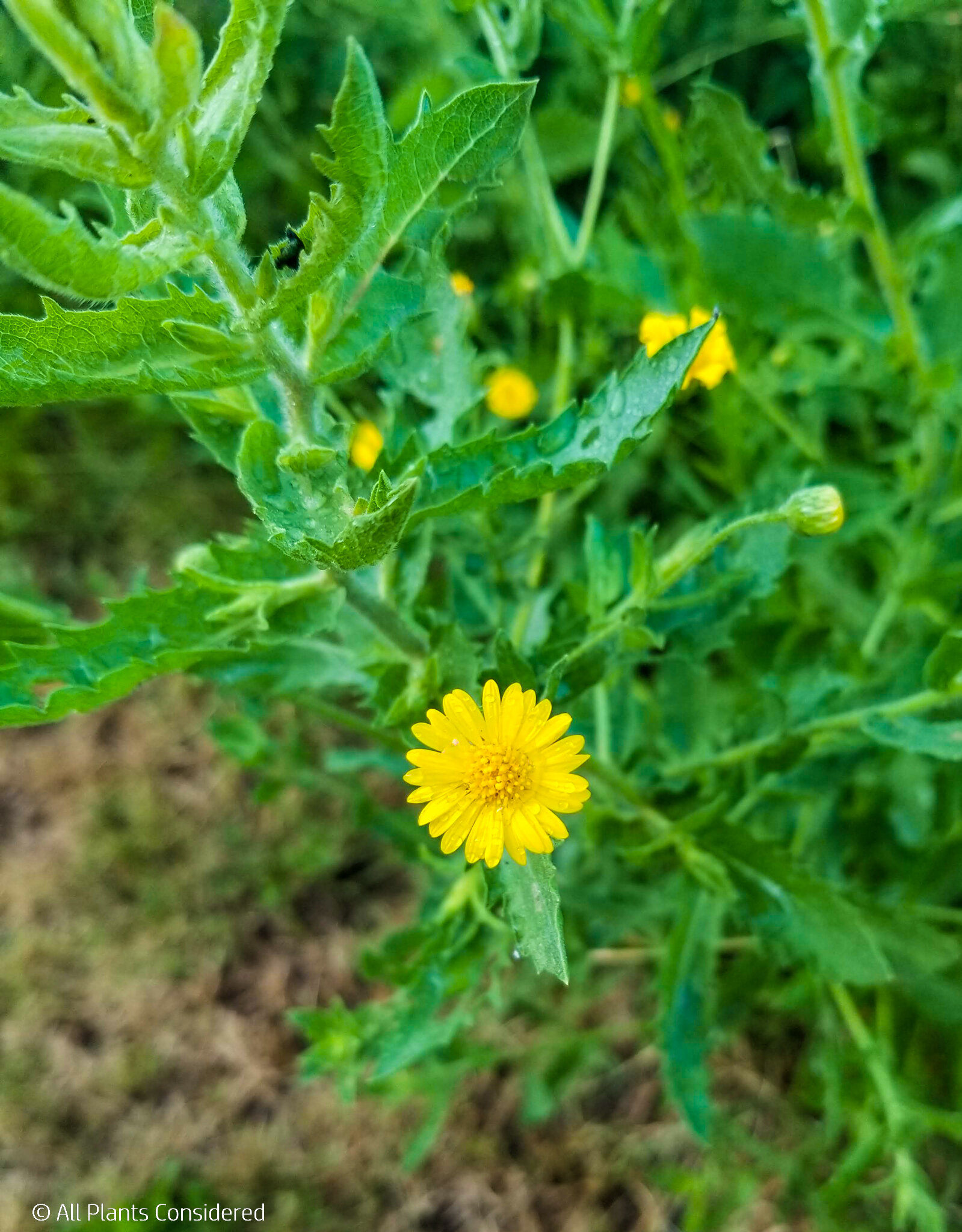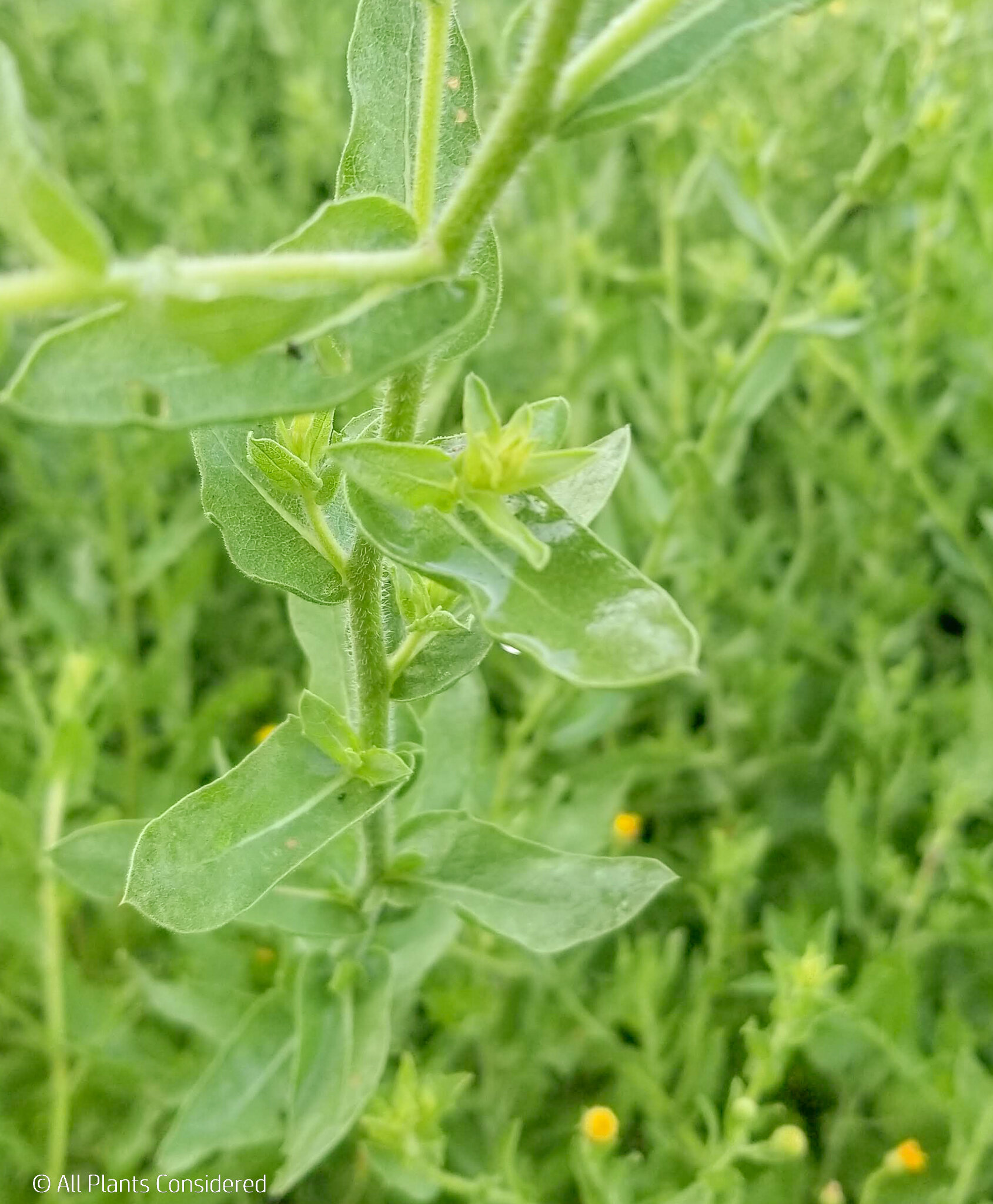Camphorweed
(Heterotheca subaxillaris)
Synonyms: Chrysopsis scabra, Heterotheca lamarckii, Heterotheca latifolia
Common Names: Golden Aster
Family: Asteraceae
Description: Camphorweed is commonly found across the southeastern United States, but has also spread across the world. Its unassuming daisy-like yellow flowers with hairy stems and leaves often is overlooked in fields and yards. Plants can grow to 7 feet (2.1m) tall, are drought tolerant, and can overwhelm an area, giving it the weed designation by many. Note that in Kentucky there is a native threatened variety, so exercise caution and respect in that area if wildcrafting.
You might not have invited it to your yard, but it does offer medicinal benefits, so might as well use it if you got it.
When crushed, the leaves have a characteristic medicinal camphor smell. This is from the borneol content in the leaves that is easily converted to camphor. Camphorweed is beneficial for use on sprains or bruises and can reduce pain, swelling, and inflammation. Camphorweed lessens the reactive inflammation process, making it best for acute and painful injuries. Injuries with pain when resting are best treated with camphorweed.
Please remember the above is for information and educational purposes only. These statements have not been evaluated by the Food and Drug Administration. This botanical is not intended to diagnose, treat, cure, or prevent any disease. See your doctor for any medical concerns that you have.
References:
Bowers Nora, Bowers Rick, and Tekiela, Stan. Wildflowers of Texas Field Guide. Adventure Publications. Cambridge, MA., 2009
Kane, Charles W. Medicinal Plants of the American Southwest. Lincoln Town Press, 2019
Brandenburg, David M. Field Guide to Wildflowers of North America. Sterling Publishing Co. 2010
https://uswildflowers.com/detail.php?SName=Heterotheca%20subaxillaris
https://plants.usda.gov/core/profile?symbol=HESU3
Morimoto,M., Cantrell,C.L., Libous-Bailey,L. and Duke,S.O. 2009 Phytotoxicity of constituents of glandular trichomes and the leaf surface of camphorweed, Heterotheca subaxillaris. Phytochemistry Volume 70, Issue 1 Pages 69-74, ISSN 0031-9422, https://doi.org/10.1016/j.phytochem.2008.09.026.
#Texasnative #Aromatic #yellowflower #camphorweed #medicinal #Asteraceae #Droughttolerant #heattolerant #skinbenefits #Camphor #SprainCare #AllPlantsConsideredBlog #EndPlantBlindess




